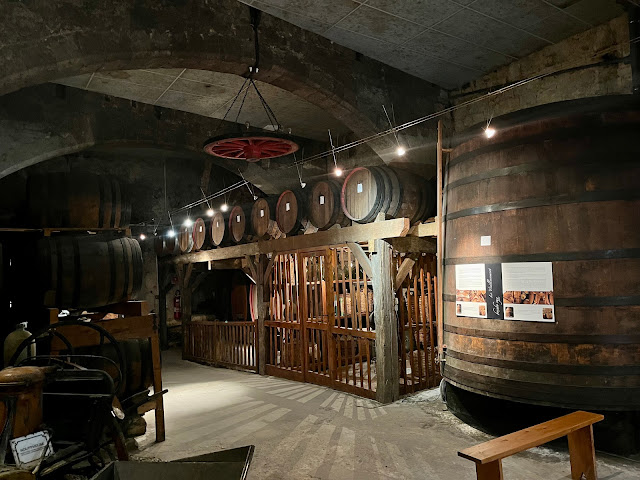This is Journées du Patrimoine weekend in Europe, so there are many historic places open to the public free of charge, that are not always open. We started our Saturday morning, with a visit to Eglise Saint Austrégésile in Mouchan, built before the 10th century by Benedictine monks. In 1089, the Eglise was given to the Cluny order and a cloister was built in the village. The Eglise suffered a fire in the late 1500's. In 1843, restorative work was done. It is a beautiful church and the villagers were welcoming. We had warm crepes prepared on site.
We stopped at Chateau de Cassaigne, just 3 kilometers from Mouchan. Chateau de Cassaigne today is a wine chateau, with 35 hectares of vineyards surrounding the village. The first Chateau de Cassaigne was built in 1247, and was a "second home" to the bishops of Condom. A small Eglise was built adjacent to the chateau. In 1789, church property was handed over to the State, and Chateau de Cassaigne was put up for auction. It was sold several times in the following years, until 1840 when the Duviard family bought it and renovated. It became a bourgeois residence, and home to a vineyard and distillery. Today, Armagnac and Floc are produced at Cassaigne. We took a short tour of the ground floor, the Eglise, and we enjoyed seeing a herd of deer resting in their back garden.
I volunteered at Lectoure's Hospital, built in the 1760's, for Patrimoine Weekend on Saturday afternoon, from 2-6. There were people from over a dozen countries and more than three dozen French departments. People came to Lectoure from all over! The Hospital in Lectoure closed in 2013 and is now used as a Brocante Village. There is a beautiful hand painted chapel, the ancient pharmacy, several belvederes with views of the Gers countryside, and the basement houses artist ateliers. The basement (donjon) housed refugees from Alsace in 1939-1940, during WWII. The hospital treated 73 African soldiers that fought for France in WWI, then suffered and died from the Spanish flu. They are buried in the cemetery across from the hospital.















